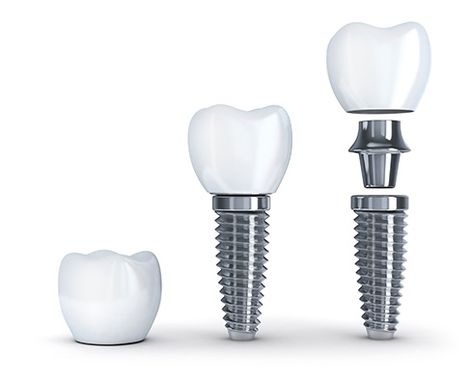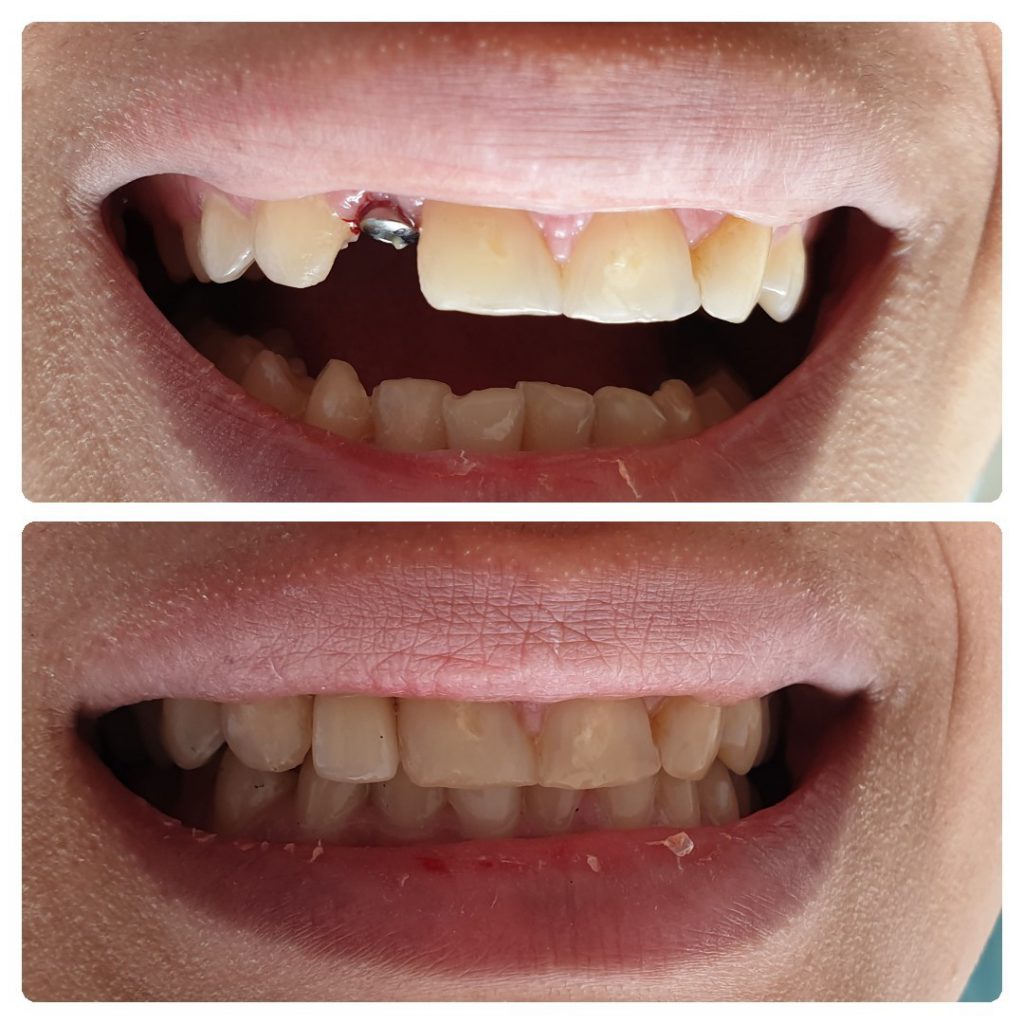
ایمپلنت دندانی چیست و چگونه انجام می گیرند؟
تاریخ: ۲۳ آذر ۱۳۹۹ dr etemadifar
کاشت دندان و ایمپلنت دندان،یک ریشه دندان مصنوعی است که برای نگه داشتن دندان یا پل جایگزین در فک شما قرار می گیرد. کاشت دندان ممکن است گزینه ای برای افرادی باشد که به دلیل بیماری پریودنتال ، آسیب دیدگی یا دلایل دیگری دندان خود را از دست داده اند.
TYPES OF DENTAL IMPLANTS
-
اندوست (در استخوان):
این رایج ترین نوع کاشت است. انواع مختلف آن شامل پیچ ، استوانه یا تیغه های جراحی شده در استخوان فک است. هر ایمپلنت یک یا چند دندان پروتز را نگه می دارد. این نوع ایمپلنت به طور کلی به عنوان جایگزینی برای بیماران بریج یا پروتزهای متحرک استفاده می شود.
-
فرعی (بر روی استخوان):
این قسمتها در قسمت بالای فک قرار دارند که پایه های چارچوب فلزی از لثه بیرون زده و برای نگه داشتن پروتز استفاده می شود. این نوع ایمپلنت برای بیمارانی که قادر به پوشیدن دندانهای معمولی نیستند و دارای حداقل قد استخوان هستند ، استفاده می شود.
Before
after
ARE YOU A CANDIDATE FOR DENTAL IMPLANTS?
کاندیدای ایده آل برای کاشت دندان از نظر سلامت عمومی و دهان بسیار خوب باشد. استخوان کافی در فک شما برای پشتیبانی از کاشت مورد نیاز است ، و بهترین افراد برای کاشت ایمپلنت افرادی هستند که دارای بافت لثه سالم و عاری از هر گونه بیماری سلامت دهان و دندان باشند.
کاشت دندان با بافت لثه و استخوان زیرین دهان ارتباط نزدیکی دارد. از آنجا که پریودنتیست ها متخصص دندانپزشکی هستند که دقیقاً در این حوزه ها تخصص دارند ، آنها افراد مناسبی به عنوان تیم ایمپلنت دندان شما هستند.
نه تنها پریودنتیست ها تجربه کار با سایر متخصصان دندانپزشکی را دارند بلکه آنها از دانش ، آموزش و امکانات خاصی نیز برخوردار هستند چرا که باید دندان هایی داشته باشید که دقیقاً مانند دندان طبیعی خودتان به نظر برسند و احساس شوند. دندانپزشک و پریودنتیست شما با هم همکاری می کنند تا رویاهای شما به واقعیت تبدیل شود.
WHAT IS A DENTAL IMPLANT PROCEDURE LIKE?
This procedure is a team effort between you, your dentist and your periodontist. Your periodontist and dentist will consult with you to determine where and how your implant should be placed. Depending on your specific condition and the type of implant chosen, your periodontist will create a treatment plan tailored to meet your needs.
- Replacing a Single Tooth If you are missing a single tooth, one implant and a crown can replace it.
- Replacing Several Teeth If you are missing several teeth, implant-supported bridges can replace them.
- Replacing All of Your Teeth If you are missing all of your teeth, an implant-supported full bridge or full denture can replace them.
- Sinus Augmentation A key to implant success is the quantity and quality of the bone where the implant is to be placed. The upper back jaw has traditionally been one of the most difficult areas to successfully place dental implants due to insufficient bone quantity and quality and the close proximity to the sinus. Sinus augmentation can help correct this problem by raising the sinus floor and developing bone for the placement of dental implants.
- Ridge Modification Deformities in the upper or lower jaw can leave you with inadequate bone in which to place dental implants. To correct the problem, the gum is lifted away from the ridge to expose the bony defect. The defect is then filled with bone or bone substitute to build up the ridge. Ridge modification has been shown to greatly improve appearance and increase your chances for successful implants that can last for years to come.
WHAT CAN I EXPECT AFTER RECEIVING A DENTAL IMPLANT?
As you know, your own teeth require conscientious at-home oral care and regular dental visits. Dental implants are like your own teeth and will require the same care. In order to keep your implant clean and plaque-free, brushing and flossing still apply!
After treatment, your periodontist will work closely with you and your dentist to develop the best care plan for you. Periodic follow-up visits will be scheduled to monitor your implant, teeth and gums to make sure they are healthy


